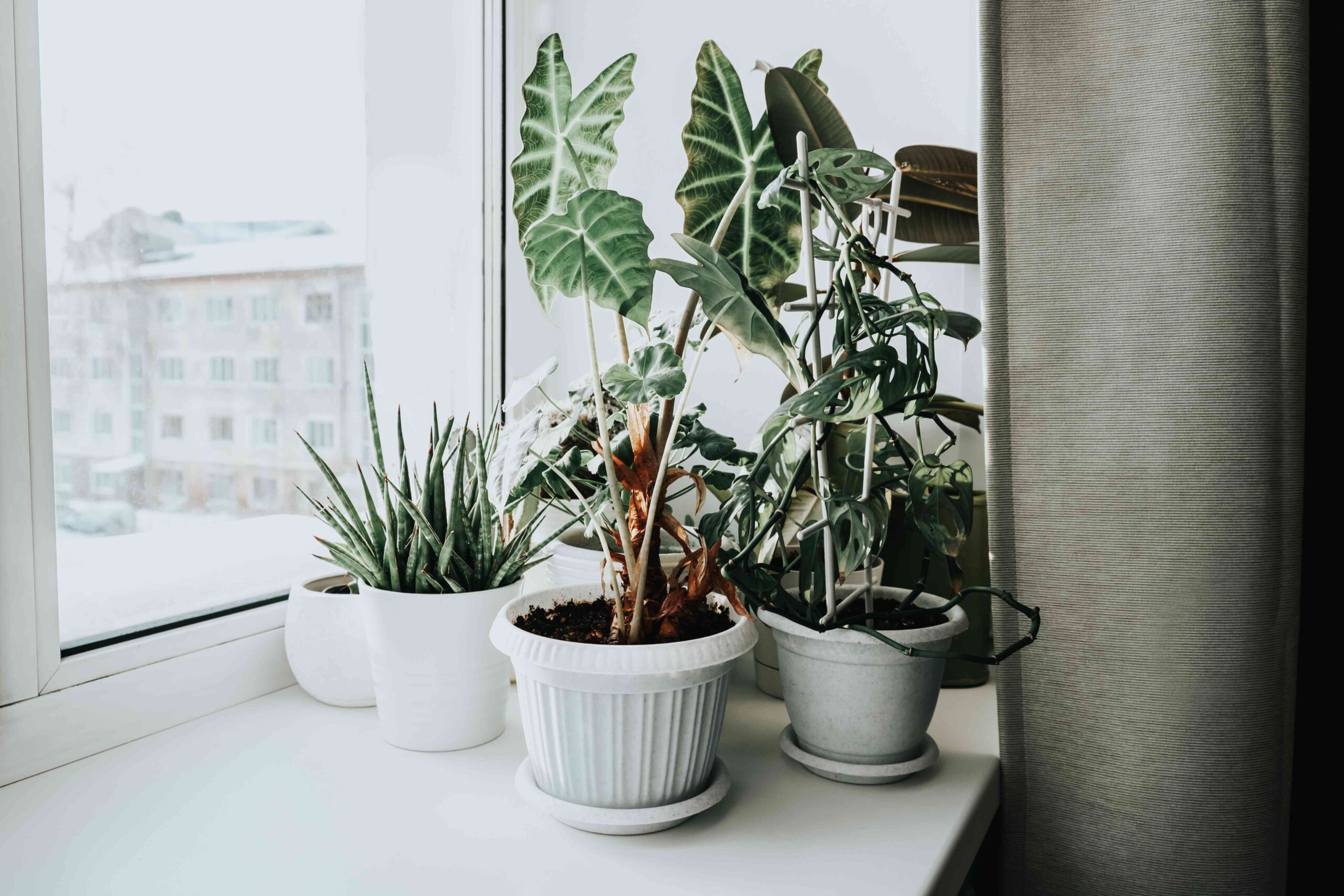Through the winter, house heaters and fireplaces make the indoor air rather a lot drier and might trigger houseplant leaves to show dry and crispy. However by adjusting your plant care routine in winter, you’ll be able to defend even humidity-loving crops from injury and guarantee your houseplant assortment appears lush in spring.
From watering tips to humidity boosters, listed below are 5 must-know winter survival ideas for houseplants that can stop browning leaves and different points too.
Meet the Skilled
- Jodi Cahillane accomplished the grasp gardener program and now works at Ward’s Nursery and Backyard Heart within the Berkshires.
- Jamie Metsch is the proprietor of Oak + Moss, a houseplant store positioned in Salem, Massachusetts.
Enhance Humidity
The Spruce / Adrienne Legault
Many tropical houseplants want additional humidity all year long to maintain their leaves from drying out. Nevertheless it’s much more necessary to offer these crops with a humidity increase in winter when indoor air will get rather a lot drier.
“Including humidity is important within the colder months as a result of elevated warmth in our houses and places of work,” Jamie Metsch, the proprietor of Oak + Moss, says. “The warmth can dry up foliage far faster than the soil and plant roots.”
Inserting a humidifier close to parched crops is one technique to increase humidity and hold plant leaves from turning into crispy. However Jodi Cahillane, a employee at Ward’s Nursery and Backyard Heart, suggests utilizing a pebble or humidity tray as a substitute.
“A humidity tray is any shallow dish or pan that may maintain a 1-inch deep layer of small stones,” Cahillane says. “Fill the dish with water so the water fills all of the gaps across the stones and place the tray below your most vulnerable tropical crops—and away from any roots rising from pots.”
Cahillane explains that the humidity round houseplants rises because the water in humidity trays evaporates. All you should do is refill the humidity tray because it will get dry—no electrical energy is required.
Need extra gardening ideas? Join our free gardening publication for our best-growing ideas, troubleshooting hacks, and extra!
Scale back Water and Fertilizer
Throughout summer time, most houseplants should be watered recurrently and fertilized at the least as soon as a month. Nonetheless, plant care wants to alter in winter, and failing to regulate your watering and fertilizing schedule can result in points, like root rot and fertilizer burn.
“Within the darker days of winter, most crops are in a resting interval and so they don’t require as a lot fertilizer or water as a result of they aren’t actively rising,” Cahillane explains.
To keep away from points, make certain to water crops extra sparingly in winter and skip the fertilizer completely. You’ll be able to enhance watering and begin fertilizing once more whenever you see new progress in spring.
Transfer Vegetation Away From Heating Models
House heaters, fireplaces, stoves, and different warmth producers scale back indoor humidity ranges; however they’ll additionally scorch plant leaves if crops get too shut. That’s why it’s all the time smart to be cautious about plant placement and to maneuver crops round (if wanted) to make sure they aren’t rising too near a warmth supply.
Cahillane recommends transferring crops away from any supply of blowing air since it’ll hold them cool and moist. Simply just be sure you don’t place crops by a chilly window or in one other drafty space since chilly air can injury crops too.
Water Deeply
Dmitrii Marchenko / Getty Photographs
Cahillane recommends watering houseplants solely when the soil feels dry to the contact and permitting water to pour by way of the pot’s drainage holes. This deep watering methodology ensures plant roots get the water they want and retains potting mixes from drying out shortly in winter.
“When pots are allowed to dry out, the soil can turn into hydrophobic,” Cahillane says. “This makes water circulate shortly and straight by way of the pot.”
Since this may be troublesome for the crops to correctly take up the water, Cahillane suggests bringing overly dry pots to a sink or tub and watering slowly. Then, let the pot stand within the water for 20 minutes till the soil can take up all of the water, after which let the pot drain, Cahillane explains.
Group Vegetation Collectively
Including a humidifier or pebble tray and retaining crops away from heating items can stop parched leaves and leaf browning. However in case you’re nonetheless nervous about dry indoor air, you might also wish to group crops with related care wants collectively. This can create a microclimate with the next humidity degree and make plant care slightly simpler.
“Grouping crops collectively retains moisture concentrated round all of them,” Cahillane says.
If you wish to enhance humidity much more, place moisture-loving crops collectively on high of a shared pebble tray or place them round a humidifier that’s appropriately sized to your rising house. This may help you get extra use out of a single humidifier and can make it simpler to maintain observe of your crops’ care wants.
Simply make sure you place succulents and different crops that desire drier air in a extra arid spot the place added humidity gained’t intervene with their progress.
